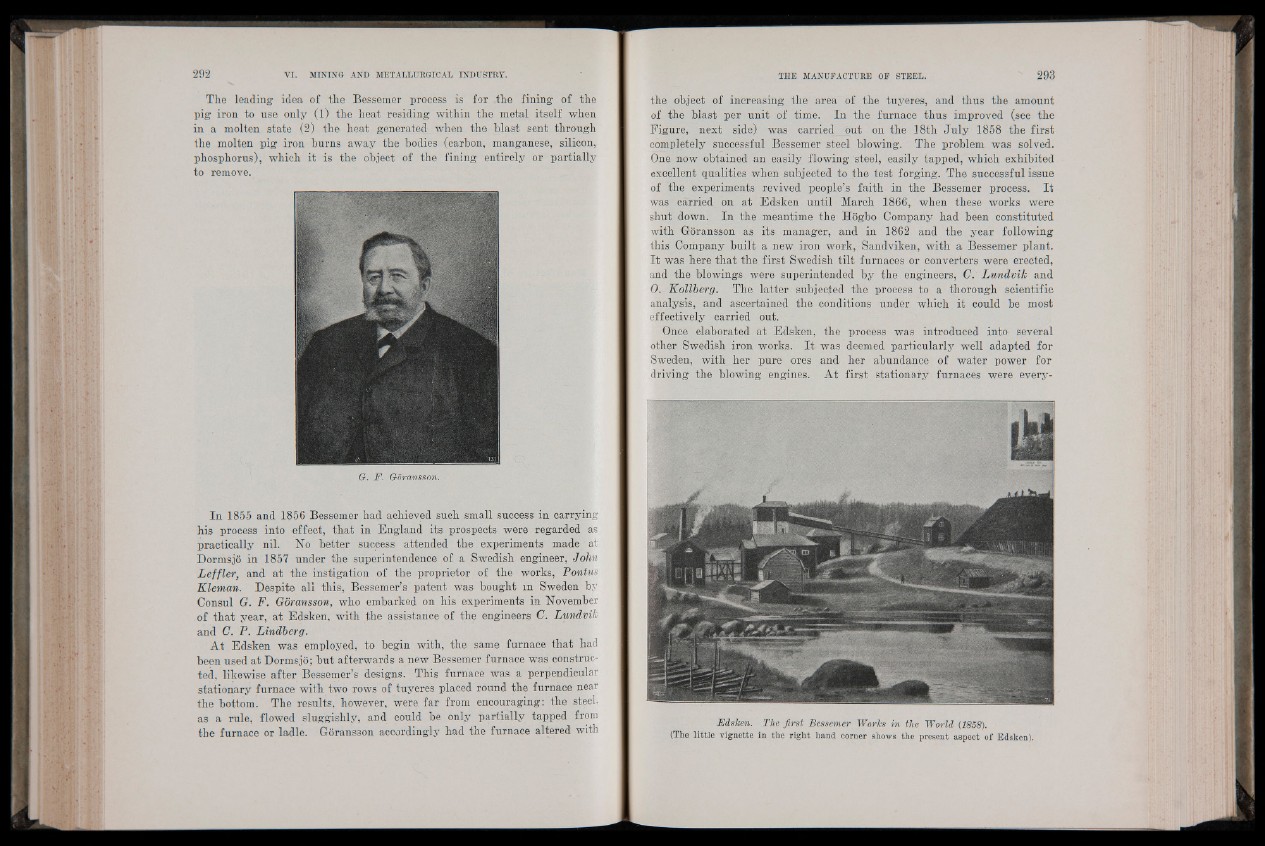
The leading idea of the Bessemer process is for the fining of the
pig iron to use only (1 ) the heat residing within the metal itself when
in a molten state (2 ) the heat generated when the blast sent through
the molten pig iron burns away the bodies (carbon, manganese, silicon,
phosphorus), which it is the object of the fining entirely or partially
to remove.
G. F. Goransson.
In 1855 and 1856 Bessemer had achieved such small success in carrying
his process into effect, that in England its prospects were regarded as
practically nil. No better success attended the experiments made at
Dormsjo in 1857 under the superintendence of a Swedish engineer, John
Leffler, and at the instigation of the proprietor of the works, Pontus
Kleman. Despite all this, Bessemer’s patent was bought m Sweden by
Consul G. F. Goransson, who embarked on his experiments in November
of that year, at Edsken, with the assistance of the engineers C. Lundvik
and C. P. Lindherg.
At Edsken was employed, to begin with, the same furnace that had
been used at Dormsjo; but afterwards a new Bessemer furnace was constructed,
likewise after Bessemer’s designs. This furnace was a perpendicular
stationary furnace with two rows of tuyeres placed round the furnace near
the bottom. The results, however, were, far from encouraging: the steel,
as a rule, flowed sluggishly, and could be only partially tapped from
the furnace or ladle. Goransson accordingly had the furnace altered with
the object of increasing the area of the tuyeres, and thus the amount
of the blast per unit of time. In the furnace thus improved (see the
Figure, next side) was carried out on the 18th July 1858 the first
completely successful Bessemer steel blowing. The problem was solved.
One. now obtained an easily flowing steel, easily tapped, which exhibited
excellent qualities when subjected to the test forging. The successful issue
of the experiments revived people’s faith in the Bessemer process. It
was carried on at Edsken until March 1866, when these works were
shut down. In the meantime the Hogbo Company had been constituted
with Goransson as its manager, and in 1862 and the year following
this Company built a new iron work, Sandviken, with a Bessemer plant.
It was here that the first Swedish tilt furnaces or converters were erected,
and the blowings were superintended by the engineers, C. Lundvik and
0. Kollberg. The latter subjected the process to a thorough scientific
analysis, and ascertained the conditions under which it could be most
effectively carried out.
Once elaborated at Edsken, the process was introduced into several
other Swedish iron works. It was deemed particularly well adapted for
Sweden, with her pure ores and- her abundance of water power for
driving the blowing engines. At first stationary furnaces were every
Edsken. The first Bessemer Works in the World (1858).
(The little vignette in the right hand comer shows the present aspect of Edsken).